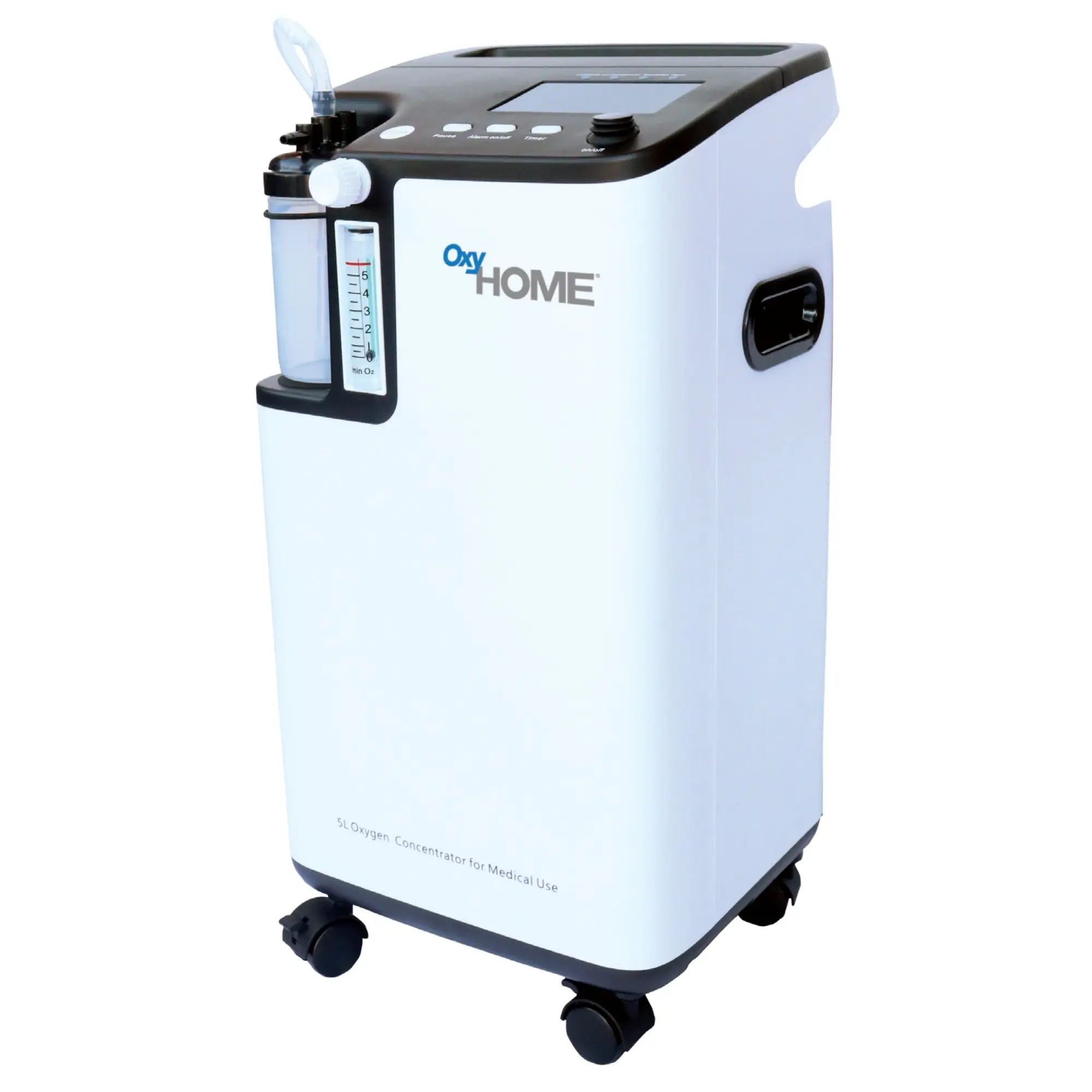Helping your child manage breathing difficulties can be stressful, but kids nebulizers can really make a difference. These devices deliver medication straight into the lungs, making them a lifesaver for many youngsters.
The best part? Unlike adult versions, the kid-sized nebulizer models are built with your little one in mind. They're quieter, come in fun shapes and colors, and feature smaller masks and mouthpieces for a snug fit. This all adds up to a more comfortable and less intimidating treatment experience for your child.
In the following sections, we'll share expert tips and real-life advice from parents who've been in your shoes. This will help you navigate nebulizer treatments with your child and turn them into a breeze (well, almost!).
How Do I Know If My Child Needs a Nebulizer?
Before diving into nebulizer use, it's essential to recognize the signs that might suggest needing one. These symptoms often indicate underlying respiratory issues that a nebulized medication can effectively manage.
Symptom Details
-
Persistent Coughing: A cough that lingers for weeks, especially at night, could signal an issue beyond a simple cold.
-
Wheezing: This high-pitched whistling sound during breathing happens when airways are narrowed or obstructed. Nebulizers can help deliver medication to open them up.
-
Difficulty Breathing: Signs of respiratory distress in children include rapid breathing, using extra muscles in the chest and neck to breathe, or flaring of the nostrils.
Seeking Medical Advice
If you notice any of these symptoms, don't hesitate to consult your child's pediatrician. They will perform a thorough examination, potentially including chest X-rays and pulse oximetry (measures oxygen levels) or lung function tests. Based on their findings, they'll determine if a nebulizer is suitable for your child's specific needs.
How Can I Help My Child Use a Nebulizer?
Helping your child use a nebulizer correctly is crucial for getting the most out of their treatment. The process can be challenging initially, but remember, a little practice goes a long way!
Here's a step-by-step guide to introducing the nebulizer in a way that feels comfortable and even fun for your child:
Step-by-Step Guide to Introducing the Nebulizer
1. Familiarization:
-
Show and Tell: Start by letting your child see and touch the nebulizer (under supervision, of course!). Explain in simple terms how it helps them breathe better.
-
Demonstration: Turn on the nebulizer without medication and show them the cool mist it creates. Explain that they'll be breathing in tiny droplets of the nebulizer medicine.
2. Engagement
-
Role Play: Turn the explanation into a game—perhaps the nebulizer is a superhero gadget that gives super breathing powers. Let your child practice using the nebulizer with plain air or saline solution to get comfortable with the mask or mouthpiece.
3. First Use
-
Guided First Use: Make the first treatment with medication a team effort! Guide your child to assemble the parts, measure the medicine, and start the machine. Show how to hold the mask to the face or use the mouthpiece.
4. Extra Tips from Parents
Here are some nebulizer insights from other parents who've been there:
-
Make it a routine: Integrate nebulizer treatments into your daily routine for better acceptance by your child.
-
Name it specially: To make treatment time less intimidating, give it a fun name, like "breathe better time."
-
Give rewards: Get your child excited about the treatment by giving a favorite snack or chocolate pudding bites before and after each treatment.
-
Positive Reinforcement: Praise your child for their cooperation and bravery!
-
Distraction works: To keep your child occupied during treatment, engage them with stories, songs, or their favorite toys.
How Do I Choose the Right Nebulizer for My Child?
Choosing the right nebulizer for kids helps to achieve an effective treatment and a smooth experience.
The best nebulizers make it easy for kids to take medicine without fear. These machines are usually quiet, easy to use, and come in cool designs that kids love. They are also portable and easy to move around.
Let's explore the different types available and what factors to consider when deciding which to choose.
Comparing Types of Nebulizers
-
Compressor Nebulizers: These are the most common type of nebulizer, known for their reliability and effectiveness. They use compressed air to turn medication into a mist. While they can be a little noisy, compressor nebulizers are suitable for all age groups, especially younger children who may require longer treatment times.
-
Ultrasonic Nebulizers: This type of nebulizer uses high-frequency vibrations to create a fine mist, making them faster and quieter than compressor nebulizers. This can be ideal for older children who prefer a quieter device and can handle shorter treatment sessions. However, ultrasonic nebulizers may not be suitable for all medications.
Checklist for Choosing a Nebulizer
Now that you know the major Nebulizer types, consider these factors before making a final choice:
-
Child's Age and Needs: Consider your child's age and development. Can they comfortably use a mouthpiece, or will they need a mask? Talk to your pediatrician about any specific recommendations they may have based on your child's condition.
-
Lifestyle Considerations: Think about your family's routine. Is portability important for frequent travel? Will the nebulizer be used primarily at home, or do you need something more compact for on-the-go treatments?
-
Additional Accessories: Many nebulizers come with various accessories. Pediatric masks in different sizes are essential for a proper fit. A carrying case can be helpful for travel, and rechargeable batteries offer more flexibility for use outside the home.
Tips for Effective Nebulizer Use
Helping your child feel confident and in control during nebulizer treatments goes a long way.
Here are some valuable tips for fostering a positive experience and effective treatment:
1. Gradual Independence:
As your child gets comfortable with the nebulizer, gradually give them more control over the process.
Start by letting them hold the mask or mouthpiece, then allow them to help with tasks like turning the machine on and off (with supervision, of course!). Over time, they can even try putting on the nebulizer mask for kids by themselves. This sense of ownership can make treatment time more manageable.
2. Safety First:
Never leave a young child unattended while using a nebulizer. Wait until they're older and demonstrate they can use it safely and independently before considering unsupervised sessions. Always prioritize safety during treatment.
3. The Power of Positive Reinforcement:
Positive reinforcement is a powerful tool! Praise your child for their bravery and cooperation during Nebulizer treatment. You can even offer small rewards after successful nebulizer sessions to create a positive association and encourage routine compliance.
4. Building Responsibility:
As your child matures, you can gradually increase their responsibility in managing their nebulizer treatments. This could involve helping them keep a treatment log to track their progress or allowing them to prepare the nebulizer setup under your supervision.
How To Make Nebulizer Time Fun for Kids?
Nebulizer treatments don't have to be a struggle! Here are some creative ideas to help you give your child an enjoyable and engaging experience.
1. Integrate Nebulizer Sessions into Playtime
-
Nebulizer Characters: Many compressor nebulizers come in fun shapes like friendly animals (fish , pandas , beagles , bears) or even characters like John Bunn Neb-U-Tyke . These playful designs can instantly make the device less intimidating and more appealing to young ones.
-
Role-Playing Games: Turn the nebulizer into a doctor's tool! Encourage role-playing games in which your child is a doctor treating their stuffed animals or dolls. Incorporating the treatment into their playtime normalizes the experience and makes it feel less medical.
2. Use Games and Apps During Treatments
-
Interactive Apps: Technology can be your friend! Look for interactive apps designed to make breathing exercises fun. These apps can guide your child through proper inhalation techniques with games and activities that keep them engaged during treatment.
-
Engaging Stories and Music: Short, engaging stories or songs that last about as long as the treatment session can be a lifesaver. Put on a show and let your child get lost in the entertainment while receiving their medication.
3. Create a Themed Treatment Environment
-
Decorate the space: Turn the treatment area into an adventure! Decorate with themes from your child's favorite cartoons or movies. Bright colors, familiar characters, and a welcoming environment can make a big difference.
-
Special Treatment Clothes: Who doesn't love a superhero cape? Designate special "nebulizer capes" or shirts for your child to wear during treatments. Adding a touch of costume magic can turn a chore into a special event.
4. Bonus Tips from Other Parents
-
After each treatment, let your child pick out a fun sticker to place on the nebulizer.
-
Offer choices to give your child a sense of control. Let them pick the mask color they want to use or decide which story or song to hear during treatment.
-
Celebrate milestones! Acknowledge your child's bravery and cooperation during treatment with praise or stickers.
Best Nebulizers for Kids
Choosing a suitable nebulizer for your child can make a big difference in their treatment experience. Here's a quick rundown of 5 kid-friendly options to consider:
This nebulizer machine for kids features a fun, colorful race car design to capture your child's imagination. It's a compressor nebulizer known for reliability and effective medication delivery, especially in treating asthma.
Similar to the Speedcar model, this nebulizer features a playful train design that transforms treatment time into playtime. It's another compressor option that ensures efficient medication nebulization.
Swimming into the world of nebulizers is this fish-shaped option! The whimsical design can make using the nebulizer less stressful for young children. It utilizes a compressor to deliver medication effectively.
Calling all young ballers! This is one of the best Nebulizers for kids who love sports.
It’s basketball-themed nebulizer injects some fun into treatment time. It's a compressor nebulizer designed for reliable performance.
Who wouldn't love a cuddly bear to help with treatments? This adorable bear-shaped nebulizer is a compressor option that can ease your child's anxieties and make treatment time more comforting.
Frequently Asked Questions
How Does a Nebulizer Work?
A nebulizer turns liquid medicine into a fine mist for your child to inhale. This mist travels deep into their lungs, delivering medication directly where it’s needed.
What Are the Benefits of Using a Nebulizer for Children?
Nebulizers effectively deliver medication directly to the lungs, bypassing the digestive system. This is ideal for young children who have trouble swallowing pills or using inhalers. Nebulized medicines can also work faster to relieve symptoms and are softer on young lungs than inhalers.
What Are the Different Types of Nebulizers?
The two main types are compressor nebulizers (the most common type) and ultrasonic nebulizers. Compressor nebulizers use compressed air to create mist, while ultrasonic nebulizers use high-frequency sound waves.
How Do I Clean and Disinfect a Nebulizer?
Generally, after each use, clean the medication cup, mask/mouthpiece, and tubing with warm, soapy water. Disinfection with a vinegar solution or specific products also works.
What Do I Do If My Child Coughs During Nebulizer?
Coughing during treatment is common, especially if your child has a cough as part of their condition. Encourage them to cough and take breaks if needed. If coughing seems severe or persistent, consult your doctor.
How Long Does a Nebulizer Treatment Usually Take?
Nebulizer treatment times vary depending on the medication and your child's condition but typically last 10-20 minutes. Follow your doctor's instructions for the prescribed duration.
How To Tell if My Child’s Nebulizer Treatments Are Working?
Signs your child's treatments are working include easier breathing (reduced wheezing/coughing), improved sleep, and increased energy levels.
When To Call the Doctor About Nebulizer Use?
Consult your doctor if your child's symptoms worsen after starting treatments or if they experience fever, difficulty breathing, or unusual side effects. Additionally, discuss alternative treatment options if your child consistently struggles to tolerate nebulizer treatments.
Next Steps
Explore our dedicated nebulizer section to find the perfect solution for your child's respiratory needs. From child-friendly designs to the latest in nebulizer technology, we have everything to make treatments easier and more enjoyable.
Need help choosing the right model or have questions? Our team of experts at Sleeplay is here to provide you with personalized guidance every step of the way.

















































